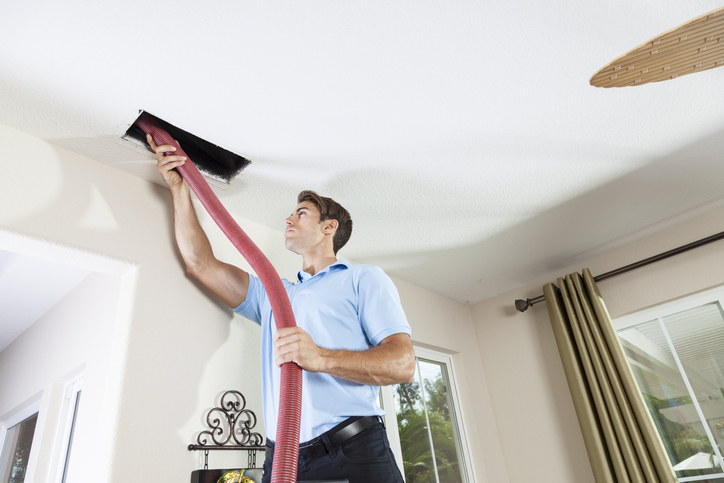Poor HVAC airflow can cause inconsistent temperature control, poor quality, and discomfort in your home. If you are experiencing these issues, you may be having issues with poor airflow:
- Hot & cold spots throughout your home,
- Weak or no airflow coming from the vents,
- One of the vents not blowing air in one room,
- Your AC system blowing warm air,
- Whistling noises caused by pressure imbalance, or
- Doors slamming by themselves.
Poor airflow can cause compressor failure, which can cause your HVAC system to become inoperable. Solving home airflow problems can increase indoor air quality, energy efficiency, and the comfort of your home. Spoor's Heating & Air Conditioning offers several common problem areas that can cause poor airflow and ways to fix them.
If you are dealing with poor AC airflow or suspect you have a problem with low airflow, contact our HVAC company to schedule air conditioning service for your home or business!

Blocked Condenser Unit & Dirty Coils
A condenser unit is found either outside or in a mechanical room. A blocked condenser reduces airflow and can cause the system to overheat, reducing airflow throughout the building. While an evaporator coil picks up heat from indoor air, the condenser coil releases heat into the outdoor air. Dirty coils can impact the efficiency of the HVAC unit and cause them to perform sluggishly. We recommend having these coils cleaned once or twice a year and with planned HVAC maintenance you can save money and ensure your coils are cleaned on a consistent schedule.
Obstructed Vent
One of the most common causes for poor airflow is a blocked vent. To properly heat or cool your home, the air needs to be unobstructed. To see if there are any blocked vents, look by the baseboards or on the ceiling. Furniture, bedding, and the vent damper could all be possible obstacles to the vent. If you find any closed or blocked vents, you can clear away the obstruction and feel for airflow, but if your vents are open and still not blowing enough air, there could be an issue with the fan's motor.
Clogged Filter
HVAC filters remove dust and other allergens from the air, but they can become clogged over time, reducing airflow and becoming inefficient. If your filter has been changed recently, but you are still noticing decreased airflow, ensure that the filter is the proper Minimum Efficiency Reporting Value (MERV) rating for your unit. If you aren't sure what MERV rating is suitable for the unit, we recommend contacting a HVAC technician.
Outdated HVAC Components
If your home was recently remodeled without accounting for the HVAC design, or if your HVAC unit is the wrong size for your home, your system might be running inefficiently. A unit that is too large for the building can cause the unit to run inefficiently and leave too much humidity in the air, making your home feel stuffy, while a unit that is too small may be unable to cool a home properly, resulting in higher electric bills and warmer inside temperatures. We suggest contacting a HVAC repair company to ensure your HVAC unit is the right size for your home or business.
Dirty Or Blocked Duct
As air flows through your HVAC system, moisture and static pressure can cause airborne particles to stick to the duct. As these particles continue to build up, you can run into air quality and airflow problems. Small animals can also find their way into your home and create their homes in your ductwork. When cleaning your home's air ducts or removing these animal dens, we recommend leaving the job to a HVAC professional to ensure that all the dust and debris are removed.
Leaky Ducts
When you have holes, gaps in connections, and other leaks, the air will leak out instead of flowing to its destination, causing a decrease in air pressure and airflow. If the ducts are too damaged to run efficiently, new ducts might have to be installed. You can tape small openings to fix leaky air ducts, but larger holes or gaps might have to be fixed by a specialist. An experienced HVAC technician can track down any leaks in the home's ventilation and seal them quickly and efficiently.
